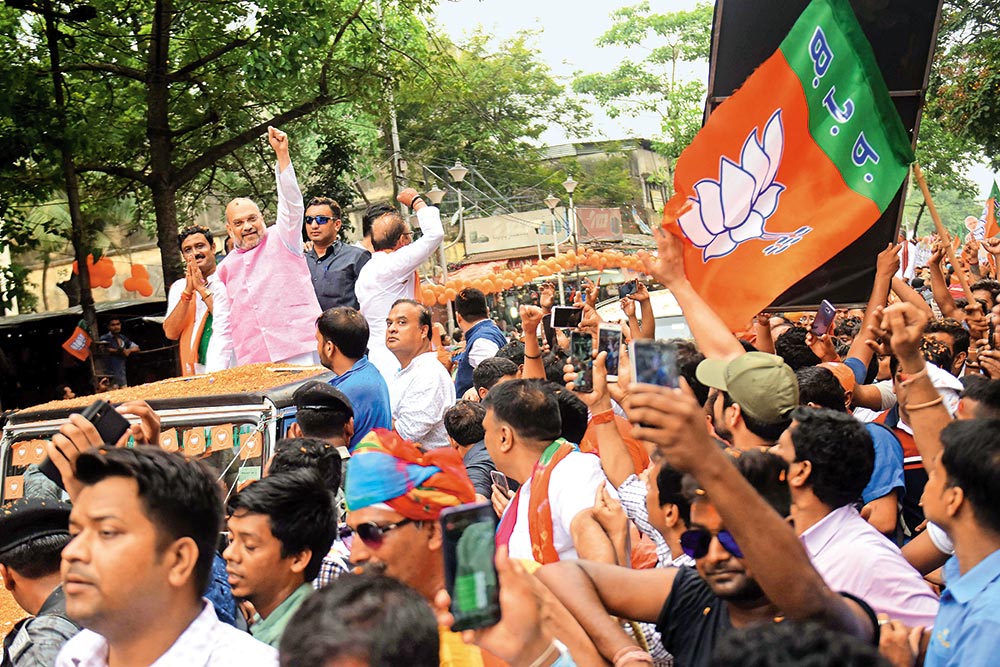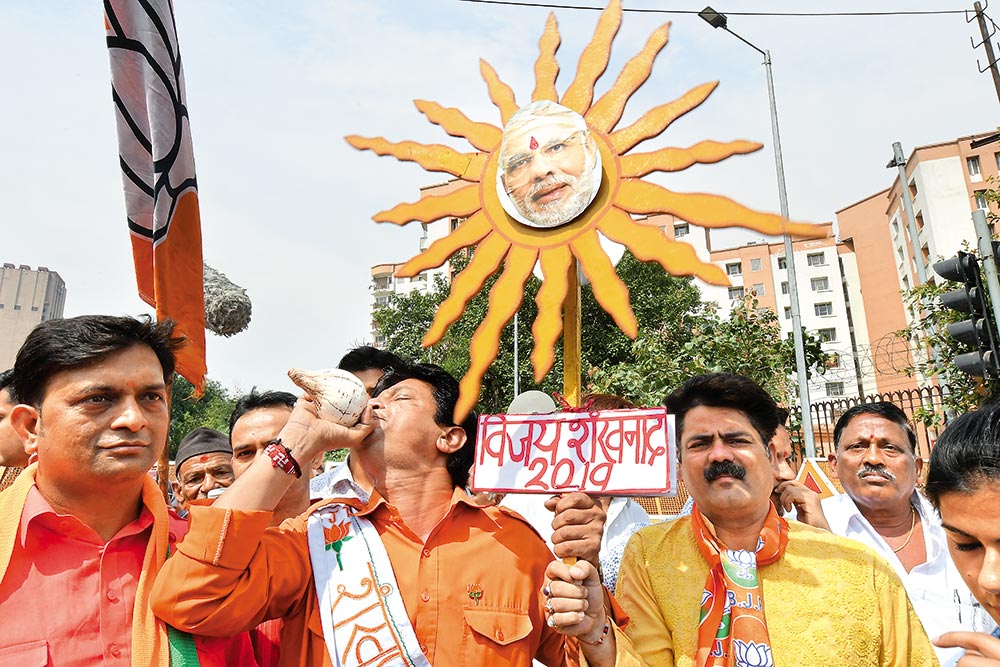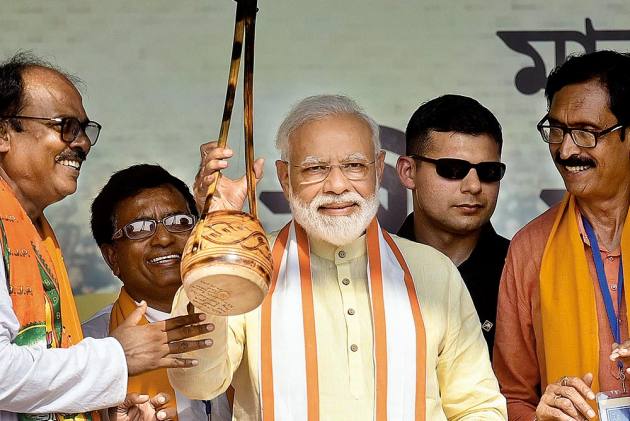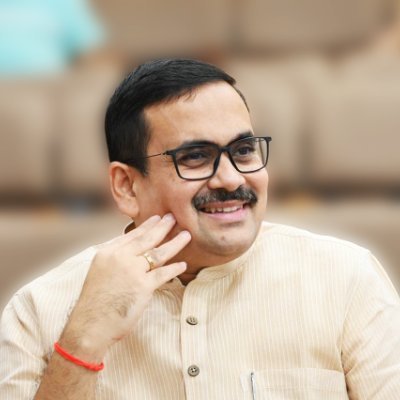All pre-election talk of Narendra Modi and Amit Shah being cut down to size evaporated after the Lok Sabha elections were declared. But BJP’s confidence to win majority on its own was backed by genius of a strategy.
Much ink is now being expended trying to decipher why and how Narendra Modi and the BJP he led in the battle for 2019 won such an epic mandate. Throughout the election campaign there were perhaps only two individuals who were certain the BJP will alone cross the 300-mark. They were Modi and Amit Shah.
Shah kept insisting that the BJP would, on its own, cross the mark, that it will be a mandate larger than the one it won in 2014. He was unflappable when giving out the numbers. For Uttar Pradesh, Shah predicted the BJP would bag between 60 and 65 seats and that it would fight for 50 per cent of the vote share. The Mahagathbandhan, he kept saying, was a non-starter, the votes would not be transferred, and it is an alliance that had no takers among the workers, voters and supporters. Many had then thought Shah’s proposition to be preposterous, they had also laughed it off, the dominant narrative in the months and days before the elections was that of the BJP’s rout in the state and how that would dash its hope of repeating 2014. The elite thinking clubs had already decided that this election would cut Modi to size.
The Vajpayee-era NDA’s one jinx was what was being referred to. The narrative being pushed, especially in the rarefied lounges of Delhi’s elite clubs, was that states such as Rajasthan and Madhya Pradesh would not see a repeat performance, the seats would lessen, even Gujarat would see depletion, the party had reached a plateau and all these would, cumulatively, weaken the BJP’s bid for a second term in Delhi. Mamata Banerjee, among opposition leaders was the most vocal in dishing out this confused arithmetic. In nearly every public meeting and press conference she addressed, Mamata would conclusively declare that the BJP would receive a big “Golla” (zero) from all of these states, including Uttar Pradesh and Delhi, and would therefore lose, and that the government and its Prime Minister had gone past their expiry dates. When the all-India tally emerged on May 23, Banerjee was the one who had to eat crow apart from Congress president Rahul Gandhi.

For West Bengal, Shah was absolutely certain that the BJP would reach a tally of 23 seats. Throughout the election campaign when he would, at regular intervals—nearly every week—visit West Bengal for addressing five to six public rallies in one day, Shah would tell us that his feedback is that we would do better than what others are predicting for us in the state. The “support for Modi is growing by the day”, the “mahaul (atmosphere and mood) had already developed, people had decided to opt for change”, Shah would confidently and calmly tell us each time we met him in Calcutta. In the heat and dust, he would travel the state, address public meetings, and connect with the people. He had sensed their mood, and had linked with their aspirations. When the results were out the BJP had bagged a phenomenal 18 seats in the state. Had a nervous Trinamool Congress not resorted to violence and rigging the BJP tally would have comfortably crossed the 23-mark predicted by Shah. Its vote share rose from around 17 per cent in 2014 to 40.2 per cent. Speaking of West Bengal, Shah would often tell us how huge the undercurrent was, he could see it and feel it long before many of us felt the pulse.
The undercurrent transformed into a Modi wave, the like of which Bengal had never seen before
Modi’s rallies across the state, especially in small town Bengal saw phenomenal response. It was evident to us, as we moved across the state, that small town Bengal was connecting in a massive way to Modi and to his narrative of liberating Bengal from the cycle of violence, of extortion and of the ‘syndicates’. In excruciating heat in peak summer, the main public ground in these towns would be chock-a-block with people waiting to hear him. They did not mind the Hindi, they did not bother about the sun, and they could not care less about the baton-wielding policemen and ruling party cadre trying to prevent them from attending Modi’s meeting. They kept surging ahead, braving all odds, they kept pushing, all they wanted was to see him and to hear him speak a few Bangla words, they wanted to hear him castigate “Didi”, speak of her “Jagai-Madhai Sarkar”, of her “tolbaji” (extortionist system), they wanted to hear him speak of Balakot, of how terrorists had been eliminated in their own hideouts in Pakistan, they wanted to hear him refer to Syama Prasad Mookerjee, Ramakrishna Paramhamsa, Vivekananda, Tagore and speak of how he wished to work for a “Sonar Bangla”.
The fiercer the oppression on them, the more steeled was their determination to vote for change. The state administration almost always directed its district magistrates and superintendents of police to try and humiliate the Prime Minister and the BJP president by refusing their helicopters landing permission. Shah’s mega road show in Calcutta saw an attempt at disruption by TMC groups. But political disruption and challenge to Shah is like a galvanising catalyst, the huge turnout of ordinary people, who wanted to attend his road show and just wave at him had clearly unnerved the TMC. The only way in which it thought it could deflect attention from Shah’s road show was by vandalising Vidyasagar’s statue and initiating a false debate on Bengalis versus outsiders. But even that failed to divert attention or stem the tide of support for Modi. The same evening after an exhausting road show, Shah addressed a group of citizens and spoke to them in detail of the BJP’s and Modi’s vision for Bengal and of how four decades of Left rule and nearly a decade of TMC rule had ruined the state in terms of industry and opportunities. The gathering had patiently waited to hear for more than three hours. The undercurrent was gradually transforming into a wave, a Modi wave, the like of which Bengal had never seen before. Not since Syama Prasad Mookerjee had anyone connected to the Bengali psyche in the manner in which Modi did in the last weeks of the campaign. This, in itself is a fascinating chapter of the battle for 2019.
On the essential question of how and why the BJP won Modi himself gave the answer while addressing the new NDA MPs in the Central Hall of Parliament. While delivering a historic address in which he publicly articulated his governance philosophy and spoke of how he experienced this election through the aura of the people, Modi observed the people had recognised and internalised his intentions of doing good for them and had seen how his government had delivered on its promises and had not swerved from the pledge he had made in his first speech of his first term that his government will be dedicated to the poor, the marginalised, the deprived and the oppressed.
It is because Modi’s policies, his outreach and schemes made a difference in the lives of the vast majority of the marginalised by successfully translating the guiding philosophy of Antyoday—empowering and catering to the last citizen standing on the societal ladder—that the collective will and urge to see him re-elected saw a resounding expression through a thumping endorsement of the path he had chosen to fulfill India’s destiny. A number of studies, in the past five years, have demonstrated how initiatives that Modi launched and imaginatively articulated and implemented have succeeded in gradually altering the collective mindset. He has, in effect proved that the movement for transformation of the societal mindset has to graduate into a movement of the people and see their participation in it—he has termed it Jan Shakti and Jan Bhagidari. It is this which steadily and gradually built up in terms of peoples’ support and endorsement and expressed itself through votes and the second historic mandate. The Modi government’s pro-active policy formulation and implementation, its conscious effort and success in plugging loopholes and leaks within the system, Modi’s consistent position that he is focused on ameliorating and empowering the marginalised consolidated in mass support for him throughout the country.
In past five years, studies show Modi’s initiatives have succeeded in gradually altering the collective mindset
In months before the elections, national security percolated as a subject of discussion right to the grassroots. One saw across the country—I can speak of West Bengal—how Balakot, airstrikes, terrorist camps in Pakistan, the need to have a firm and unhesitant policy to secure India, how India had for the first time redefined its concept of strategic restraint, became the topics of intense discussion. Across small towns in West Bengal, in tea shops, on pavements and benches in front of sweet shops, in cloth shops and groceries, the discussion was often how Modi had taught Pakistan a lesson, how this was at last done, how he had deftly handled the world powers that supported his move of securing India. I also heard a number of ordinary Bengalis ask this question, “If Didi has indeed done good work, if she has delivered all that she professes to have, why is she scared of elections, why is she trying to prevent us from voting, why is she spreading an atmosphere of fear, let her allow everyone to vote without fear.” The more they were being prevented to vote, the more they were determined to exercise their right to vote.
Both Mamata and Rahul based their campaign on false narratives and “established negativities”. They resorted to abuse, to rumour mongering, to lies and deceit—in this their campaign and their approach to Modi, were complementary. Mamata went a step ahead and not only hurled expletives at Modi at each one of her public meetings, but also used the entire state machinery—at least whatever was left within her control during the period of the elections—to spread fear, to obstruct the BJP’s political activities, to pulp its workers, to spite and insult the Prime Minister and Shah. But this time round, such a degenerative behaviour clearly had a negative impact on the people, as Modi reminded the NDA legislators, “it was the people and not Modi or the BJP or you who were fighting this elections”. Since they were fighting it, Mamata was in direct confrontation with the people when she lobbed expletives at Modi. How can you then seek their support and votes? It was an interesting equation that was being worked out. She failed to apprehend it.

The majority roundly rejected the propensity of leaders to prop their electoral narrative on “established negativities”. Moreover, as I have often argued, Modi had a narrative, he had a clear performance chart before him, he told the people on how he wanted them and India to grow, his vision and hopes for India were civilisational, it was rooted in the Bharatiya ethos—a sense which people on the ground, in the field, in the villages, were quick to connect to. His nationalism leaped over all barriers and appealed across cross-sections. Indeed his intention to do good was never doubted, people applauded his one-point determination to work for them and for India, it is something they had not heard so unequivocally from anyone else before. Modi’s opponents lacked a narrative, a cohesive roadmap, they were not convincing, they had nothing to show in terms of performance, they based their vote-enticing effort on dialectics of false positions, untruth, abuse and more abuse. In Modi, people perceived the realisation of the politics of aspiration and more importantly they saw him as one of their own who had risen through the ranks facing adversity and resistance. They could identify with him, in him they saw reflected their possibilities and rise. The abuses and false accusation could not divert their focus on ensuring that Modi wins. They identified with him completely and unconditionally.
Other parties were grappling with internal issues, while BJP renewed itself…ideology and organisation
A well-exercised and battle-ready party system, an active network and web of workers from grassroots upward, a clinical electoral strategy, deft alliance-striking skills, astute outreaches across sections of society, multiple and multi-dimensional activities that went beyond politics, a systematic reaching out to those who were beneficiaries of the Modi government’s schemes and initiatives, a planned and strategic expansion of the party’s footprints in areas where it had not struck roots, a unique and mega membership drive, enlisting of committed and dynamic volunteers at all levels, ensuring a high peak in terms of governments in 20 states at one point of time, a punishing tour—pravaas—schedule followed by the party’s national president and his office-bearers across the country, minute organisational details being worked out, modernisation of working ambience, a constant and consistent emphasise on an ideological self-renewal and a perfectly synchronised party and government relationship and partnership—all of these and much more in the interim between 2014 and 2019 enabled the BJP, under Shah’s leadership, to keep itself on the move displaying focus, determination, creativity and electoral performance. Some of the most historic wins for the party, Tripura, Uttar Pradesh, Maharashtra, Assam and Haryana came during this period. While other parties were grappling with internal issues, splits, ideological challenges, the BJP systematically renewed itself—in terms of organisation and ideology.
Both in terms of governance and in terms of the party’s growth and expansion it has been an unparalleled phase in the annals of post-independent India’s political history. Political pundits may keep nodding their heads in disagreement, the Khan Market caucus may disagree or attempt to discredit the narrative, but the how and why of the BJP’s and Modi’s watershed victory lay in that—unprecedented governance and unrelenting focus on party work. The reason of an epic electoral success clearly lies in that symphony.
(The views expressed are the author's own and do not necessarily reflect the position of the organisation)


